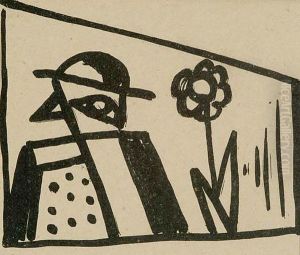Wladimir Burliuk Paintings
Wladimir Burliuk was a Russian avant-garde artist, illustrator, and art critic associated with the Futurist movement. He was born on March 27, 1886, in Kharkiv, then part of the Russian Empire, and grew up in a creative environment; his brothers David and Nikolay became recognized artists and his sister Lyudmila was a poet.
Burliuk's early education was in Russia, but he furthered his artistic training by traveling extensively. He studied at the Munich Royal Academy of Arts in 1902 and attended the École des Beaux-Arts in Paris. He was also a student at the Kiev Art School and the Moscow Institute of Painting, Sculpture, and Architecture. These experiences allowed him to absorb a range of artistic influences, which would later inform his eclectic style.
Burliuk was a central figure in the Russian avant-garde movement, actively participating in various artistic groups and activities. He co-founded the futurist group Hylaea (also known as Gileya) and was a signatory of the group's 1912 manifesto, 'A Slap in the Face of Public Taste,' which called for a break with traditional art forms and championed the innovation of Futurism.
During his career, Wladimir Burliuk contributed to numerous exhibitions and had a significant influence on the development of Russian Futurism. His works often featured vibrant colors and dynamic compositions, and he was known for combining elements of Cubism and Futurism. Aside from painting and illustrating, he was actively engaged in writing art criticism, advocating for the avant-garde movement, and organizing exhibitions.
Tragically, Wladimir Burliuk's life and career were cut short by the turmoil of World War I. He was drafted into the Russian Army and was killed in 1917 at the age of 31. Despite his brief career, he made a lasting impact on Russian modern art and is remembered for his bold artistic vision and contributions to the avant-garde community.

